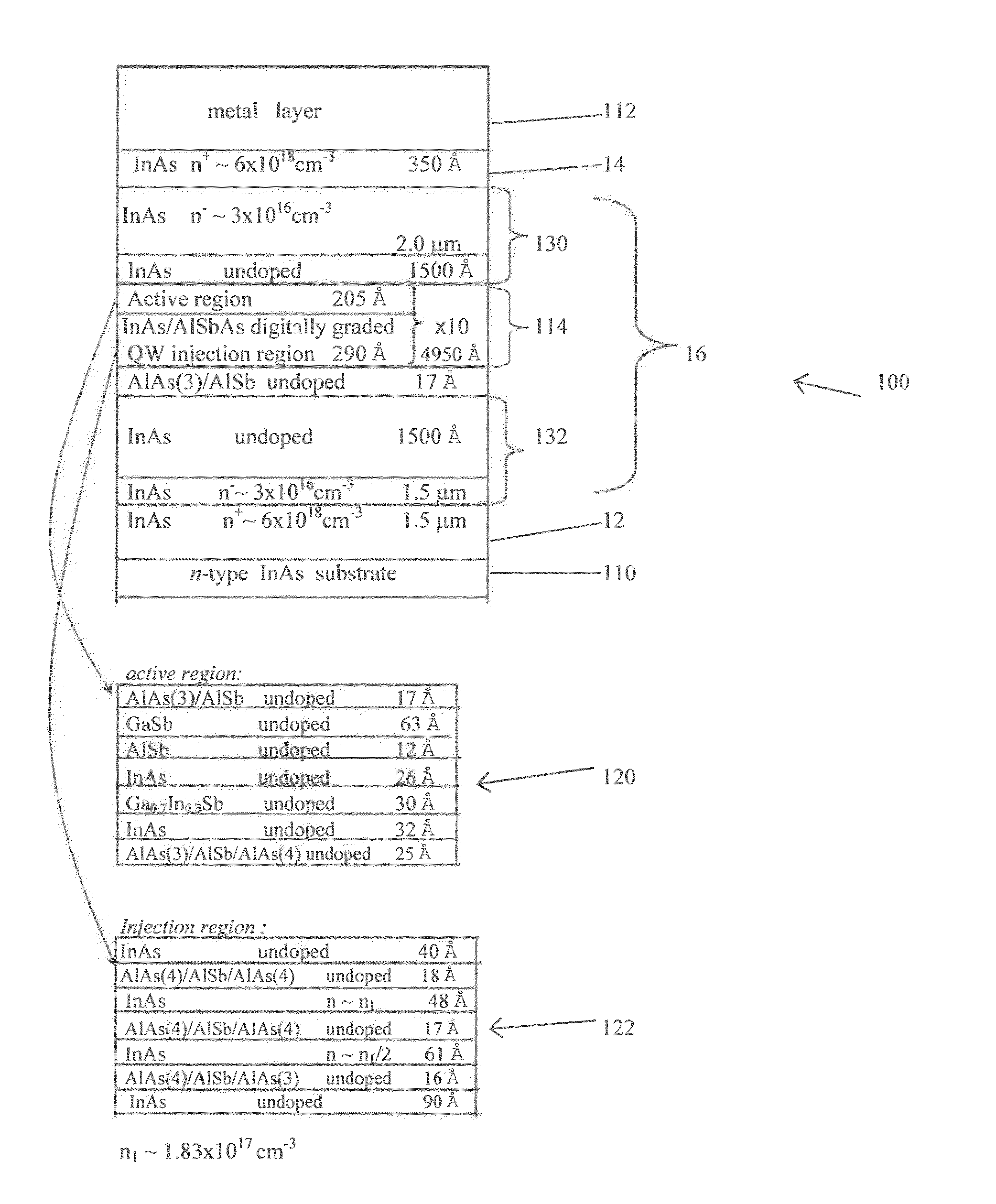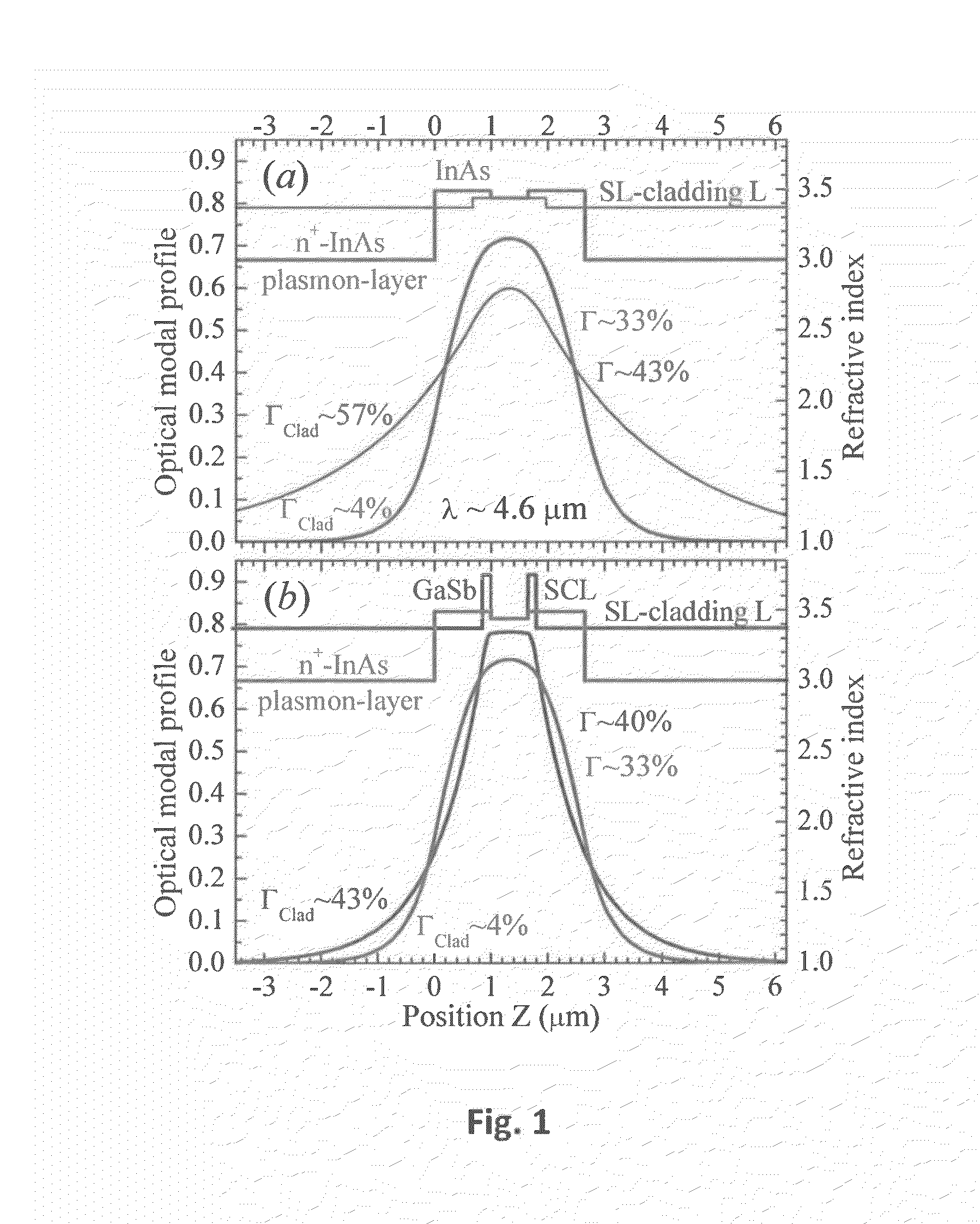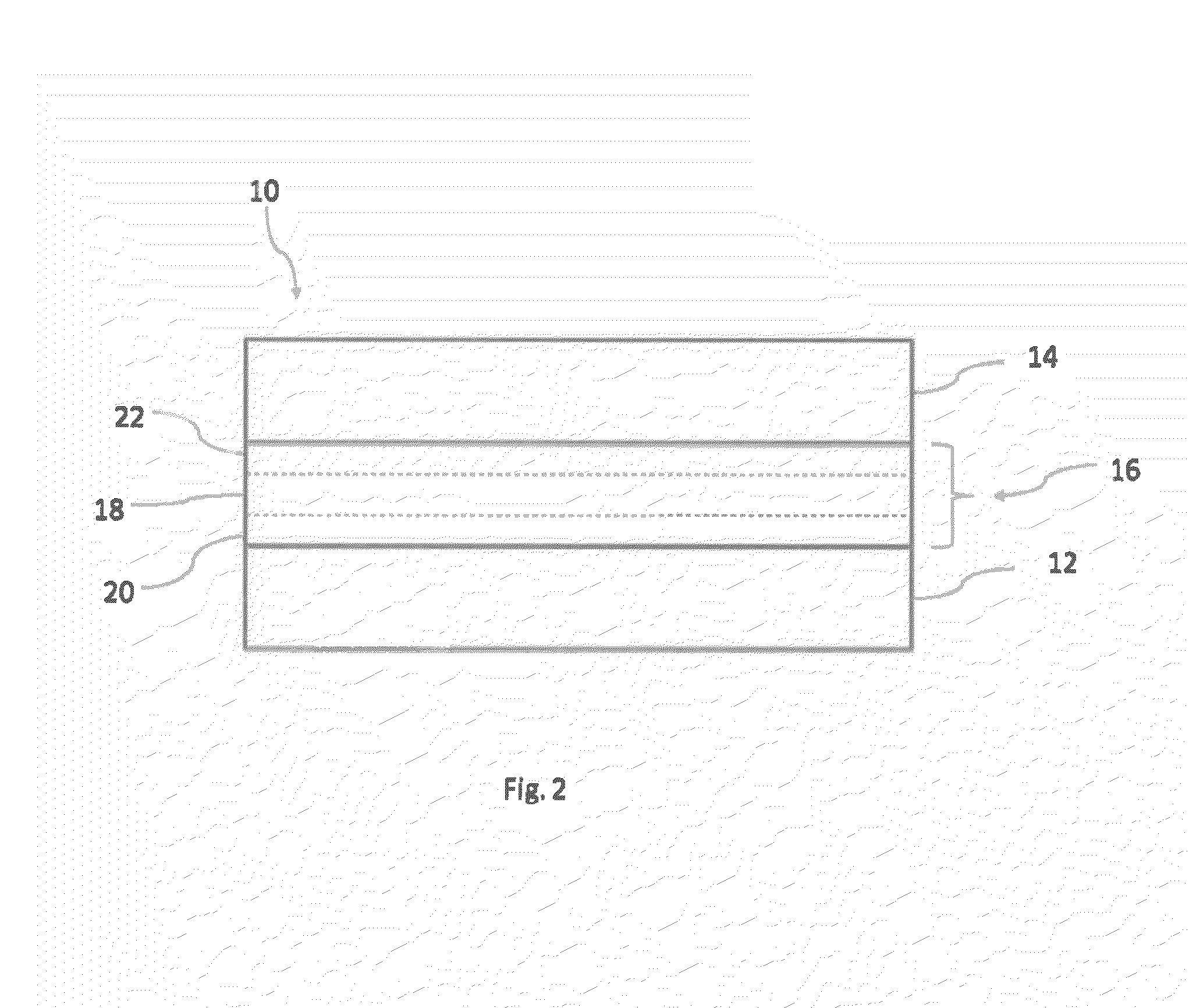Semiconductor interband lasers and method of forming
a technology of semiconductors and lasers, applied in semiconductor lasers, lasers, active medium materials, etc., can solve the problems of unsatisfactory optical loss and worse situation, and achieve the effects of high optical loss, high optical loss, and loss loss and internal efficiency
- Summary
- Abstract
- Description
- Claims
- Application Information
AI Technical Summary
Benefits of technology
Problems solved by technology
Method used
Image
Examples
first embodiment
[0032]In the laser 10, the first cladding layer 12 is formed using a first high-doped semiconductor material having a first refractive index, whereas the second cladding layer 14 is formed using a second high-doped semiconductor material having a second refractive index. In this embodiment, the first and second high-doped semiconductor materials can be the same materials, or they can be formed using different materials. That is, the first high-doped semiconductor material can be a different material than the second high-doped semiconductor material. The waveguide core 16, including the active region 18, also has a waveguide core refractive index. In a preferred embodiment of the present disclosure, the first and second refractive indexes are lower than the waveguide core refractive index.
[0033]The first and second cladding layers 12 and 14 are formed with high-doped semiconductor material having doping concentrations in a range of between 1018 cm−3 to 1019 cm−3. In another aspect, t...
third embodiment
[0035]In a third embodiment, the first cladding layer 12 is formed using a first metal having a first permittivity, whereas the second cladding layer 14 is formed using a second metal having a second permittivity. Similarly, the waveguide core 16, having the active region 18, has a waveguide core permittivity. In this embodiment, the first and second permittivity is lower than the waveguide core permittivity. Exemplary metals used to form the first and / or the second cladding layers 12 and 14 include, but are not limited to, Ag, Au, Cu, Ti, Pt, Ni, and Pd, or combinations thereof.
[0036]The active region 16 is adapted to generate light based on interband transitions. As would be understood in the art, the light being generated based on interband transitions thereby defines the lasing wavelength, or the lasing frequency of the laser 10. A more particular example, of an active region 16 is described herein below with respect to the following figures. In one aspect, the active region 16 ...
PUM
 Login to View More
Login to View More Abstract
Description
Claims
Application Information
 Login to View More
Login to View More - R&D
- Intellectual Property
- Life Sciences
- Materials
- Tech Scout
- Unparalleled Data Quality
- Higher Quality Content
- 60% Fewer Hallucinations
Browse by: Latest US Patents, China's latest patents, Technical Efficacy Thesaurus, Application Domain, Technology Topic, Popular Technical Reports.
© 2025 PatSnap. All rights reserved.Legal|Privacy policy|Modern Slavery Act Transparency Statement|Sitemap|About US| Contact US: help@patsnap.com



